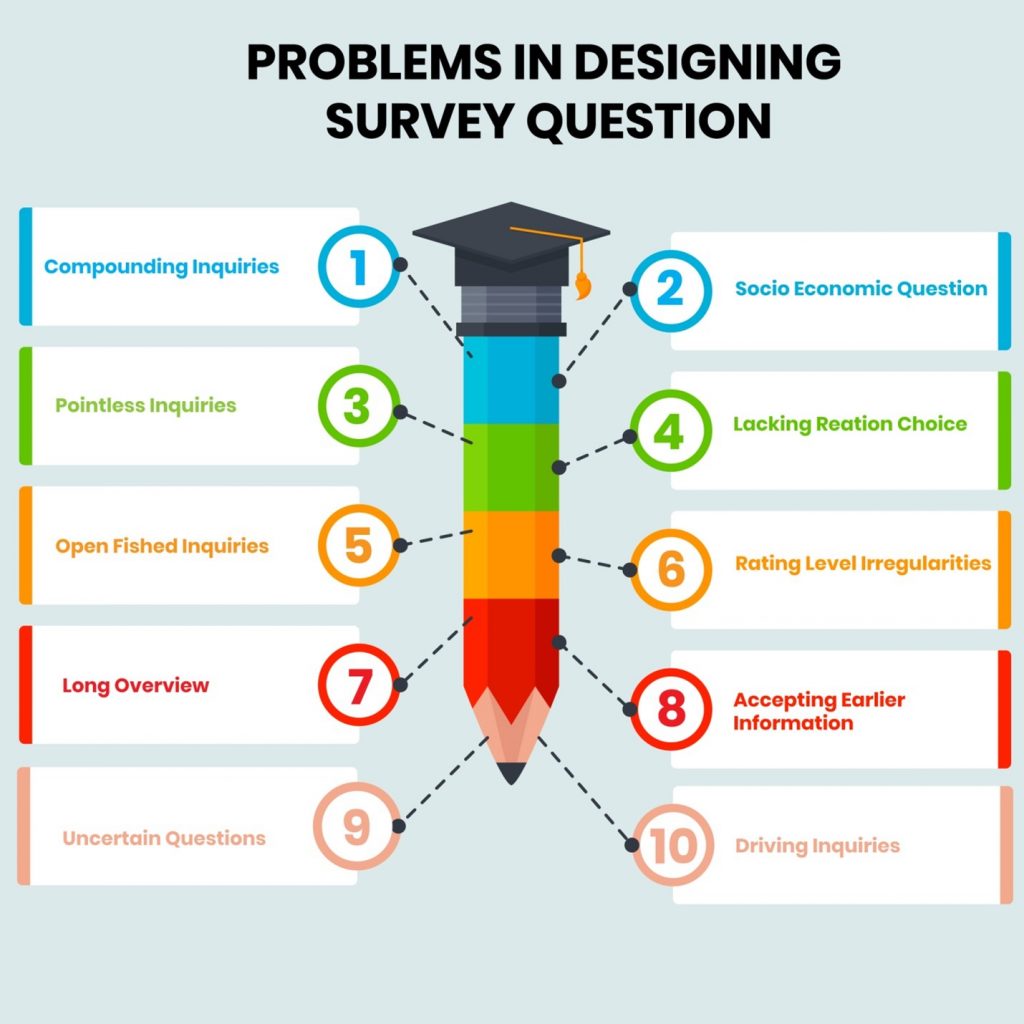What are the Common Problems in Designing Effective Survey Questions?
In-Brief:
- Surveys are a successful method to gather information from your clients. They are useful in assessing your contributions and discovering approaches to make improves.
- However, a few people battle with the review plan and creation and make studies that aren’t giving them the most exact outcomes of survey questionnaire analysis.
- Statswork will guide you to know the errors in survey questions and helps to do a Market research survey analysis
Introduction:
Study research is presently encountering enormous difficulties that have significant ramifications for both the technique and its utilization in the investigation of humanitarian issues. Review interest is declining, and this pattern is probably going to proceed. A few causes might be social. A few reasons might be more. Simultaneously, the information gathered through overviews is better than anyone might have expected. For instance, overview researchers1 are more proficient and gifted at composing addresses that respondents can answer all the more precisely for Questionnaire design business and market research. As generosity analysts utilize more review information, they should be aware of these difficulties and changes. This article is an outline of some significant challenges presently confronting overview research. Also, we portray the ramifications of these difficulties for applied and fundamental examination in altruistic investigations. The problems as of now engaging study research are solid with issues in investigating altruistic matters by and large and with the exploration exercises of charitable associations (NPO) specifically. Exploration of charitable practices and NPOs requires more idea and regard for an overview plan of the micro-business growth Questionnaire survey.

Socioeconomics questions:
Such a large number of overviews start with a progression of segment questions (name, title, address, telephone number, email, and so on) that are regularly superfluous when studying current clients. Existing clients will discover these inquiries tedious and will probably ask why you don’t have the data as of now. Other than keeping in touch list, search for overview devices that take into consideration segment data to be populated. It assists with decreasing respondent irritation and improves your reaction rate.
Lacking reaction choices:
Analysis of Service Quality Questionnaire makes a point to incorporate reaction runs that cover all situations for the respondents, yet ensure the reaches don’t cover to dodge disarray. For instance, one essential slip-up happens when giving date range choices – make sure to incorporate “short of what one year” and an alternative that covers “X in addition to years.” Creating a circumstance wherein a respondent isn’t sure what to choose can make disarray and result in wrong reaction information for Business research survey questionnaire analysis
Rating level irregularities:
At the point when you are posing various inquiries dependent on a comparative rating scale, it is not entirely apparent rating level irregularities. While a few leaves can be castoff all through an overview, be sure that the appropriate response rating – regardless of whether it’s 1 to 5 or 0 to 10 – streams reliably on comparative sort inquiries all through the study. Additionally, be sure the scales are emulated a similar way (for example, left to right) when offering similar decisions for Statistics research hypothesis questionnaire development.
Accepting earlier information or comprehension:
Try not to accept respondents know more than they do about your association. Look at the inquiry to guarantee all the “building blocks” have been set up to show that the respondent can proficiently react of the investigation. Your review should rule out vagueness or mistakenly depend on assumed earlier information from respondents. An illustration of this would use abbreviations or industry language that may not be promptly known by the entirety of your clients or could be effectively confounded, prompting irregularities in the information from questionnaire design business research.
Driving inquiries:
For instance, “We have as of late redesigned our item to turn into a five-star instrument. What are your contemplations on the top of the line item?” These inquiries flexibly current realities or propose the appropriate response in the phrasing of the investigations. The question itself can “lead” respondents to a specific reaction. It is regularly inadvertent and is a typical mix-up when a study is planned by somebody who is excessively firmly connected with the task.
Twofold dashed or compound inquiries:
At the point when you audit each review question pose yourself if the inquiry contains more than one “question”. The words “and” and “or” speak to reasonable tell-tail indications of a compound study question.
Question is uncertain or confused:
A typical model emerges from overview questions containing “negative” phrasing, which can undoubtedly confound respondents. Such inquiries, as a rule, incorporate “not” and request that respondents differ or concur with the assertion or position. It isn’t to be mistaken for answer decisions, which frequently include the expressions “dissent” or “concur” in studies of Questionnaire design business research.
Pointless inquiries:
Ask yourself, “What am I searching for that is significant?” Don’t attempt to consolidate everything in addition to the kitchen sink in your study plan. For instance, I once observed a study question that asked: “When you took a gander at yourself in the mirror today, what was the principal thing you thought?” After perusing this inquiry, I chose the review did not merit my time for business research Survey data analysis
Exorbitant open-finished inquiries:
Expect that you pose ten open-finished inquiries and get 100 reactions. By and large, every respondent composes two sentences for each question, bringing about 2,000 sentences to be investigated following the review. A customarily written archive contains 16 sentences for each page, which implies you should audit 125 pages worth of open-finished input. Presently consider the respondents – numerous respondents won’t work out reactions to something other than a couple of open-finished inquiries. Holding your open-finished searches to three or four is commonly adequate. In this way, pick astutely and utilize open-finished searches insightfully.
Long overviews:
Time is cash; ask just what you have to know today. Studies that are excessively long, excessively unpredictable, and too befuddling will baffle respondents, bringing about skipped questions or drop-offs. Show that you regard the time and exertion respondents spend noting your review. Spare more key situated inquiries for telephone effort or Customer Advisory Board gatherings with your most elevated need clients.
Conclusion:
Recollect that since innovation permits you to make an overview, the simplicity with which reviews can be given ought not to sabotage the significance and nature of your study questions. Stats work can assist you with building up a thought that produces quality, significant outcomes by keeping away from these typical errors.
References:
- Campanelli, P. (2008). Testing survey questions. International handbook of survey methodology, 176-200.
- Fowler, Jr, F. J., & Fowler, F. J. (1995). Improving survey questions: Design and evaluation. Sage.



 Previous Post
Previous Post Next Post
Next Post